Blue Coat PacketShaper 12000 review
Blue Coat’s PacketShapers are on every network administrator’s wish list as they deliver quality WAN traffic management features. We exclusively review the flagship 12000 appliance and see if it’s the one to beat.
The hardware platform could be more up to date considering the price but you won’t find superior WAN traffic management anywhere else. It’s annoying having to keep swapping between the Sky and legacy interfaces but the PacketShaper is easy to deploy and provides versatile category based web surfing controls.

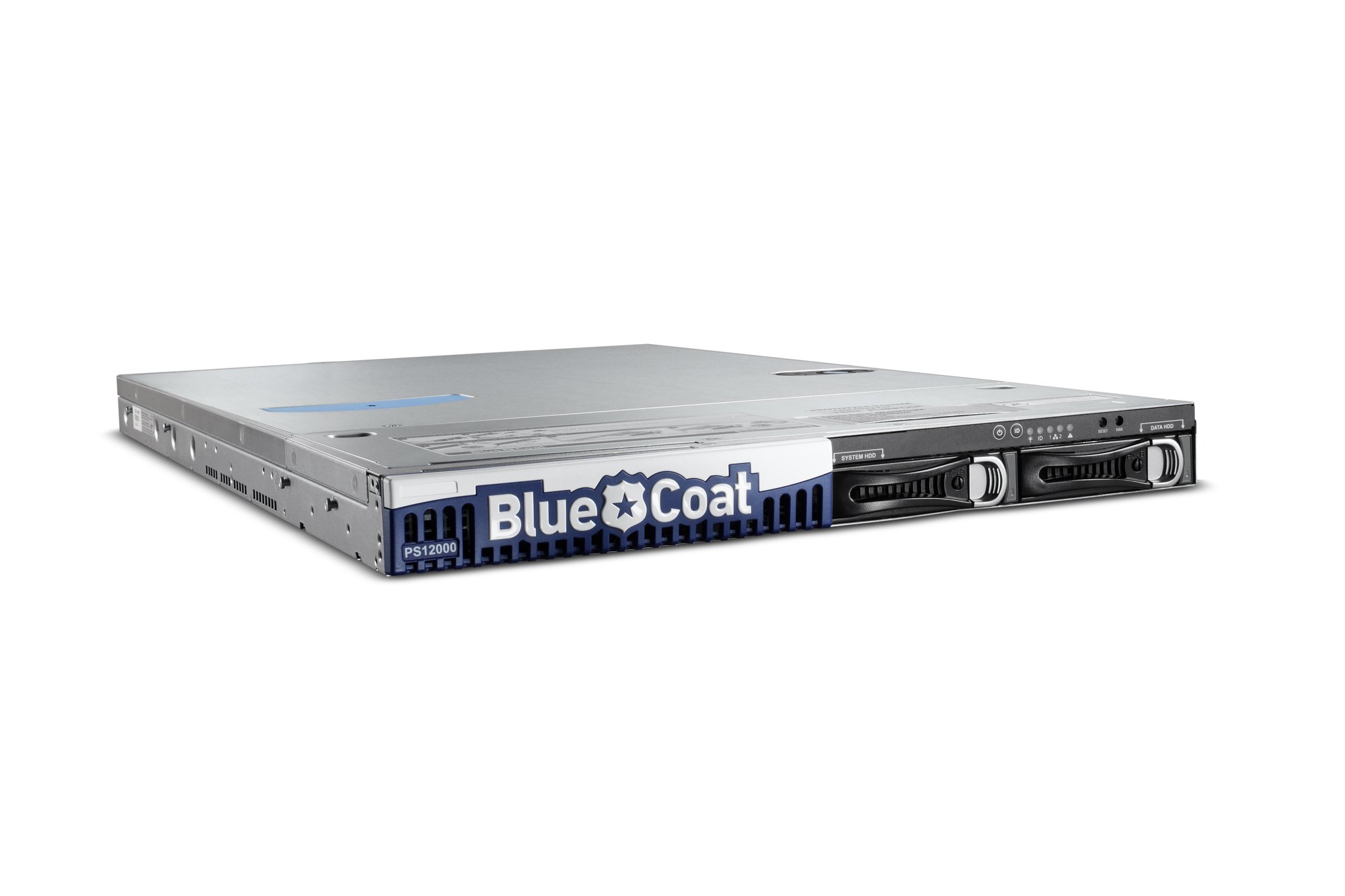
PacketShaper
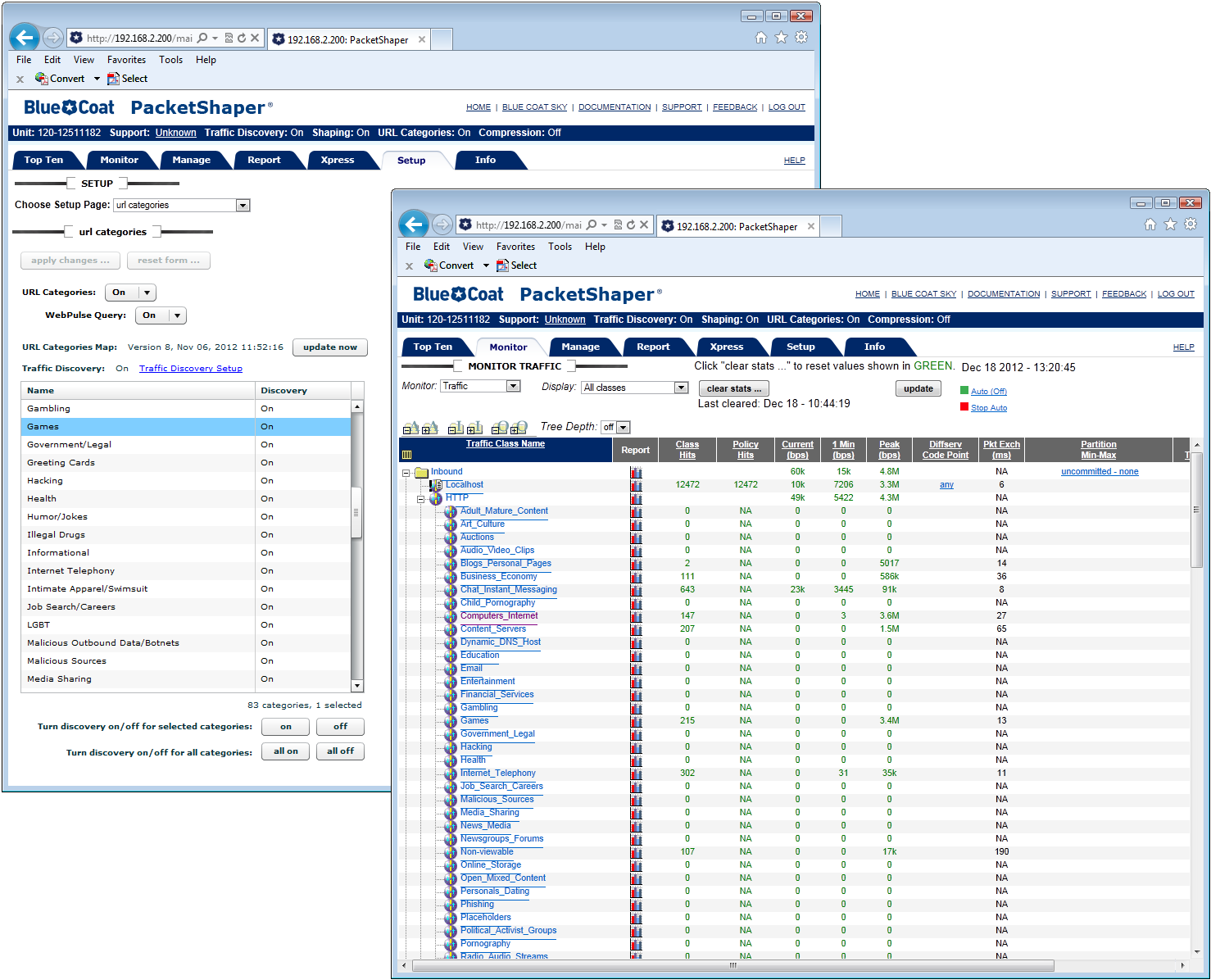
Packet 4
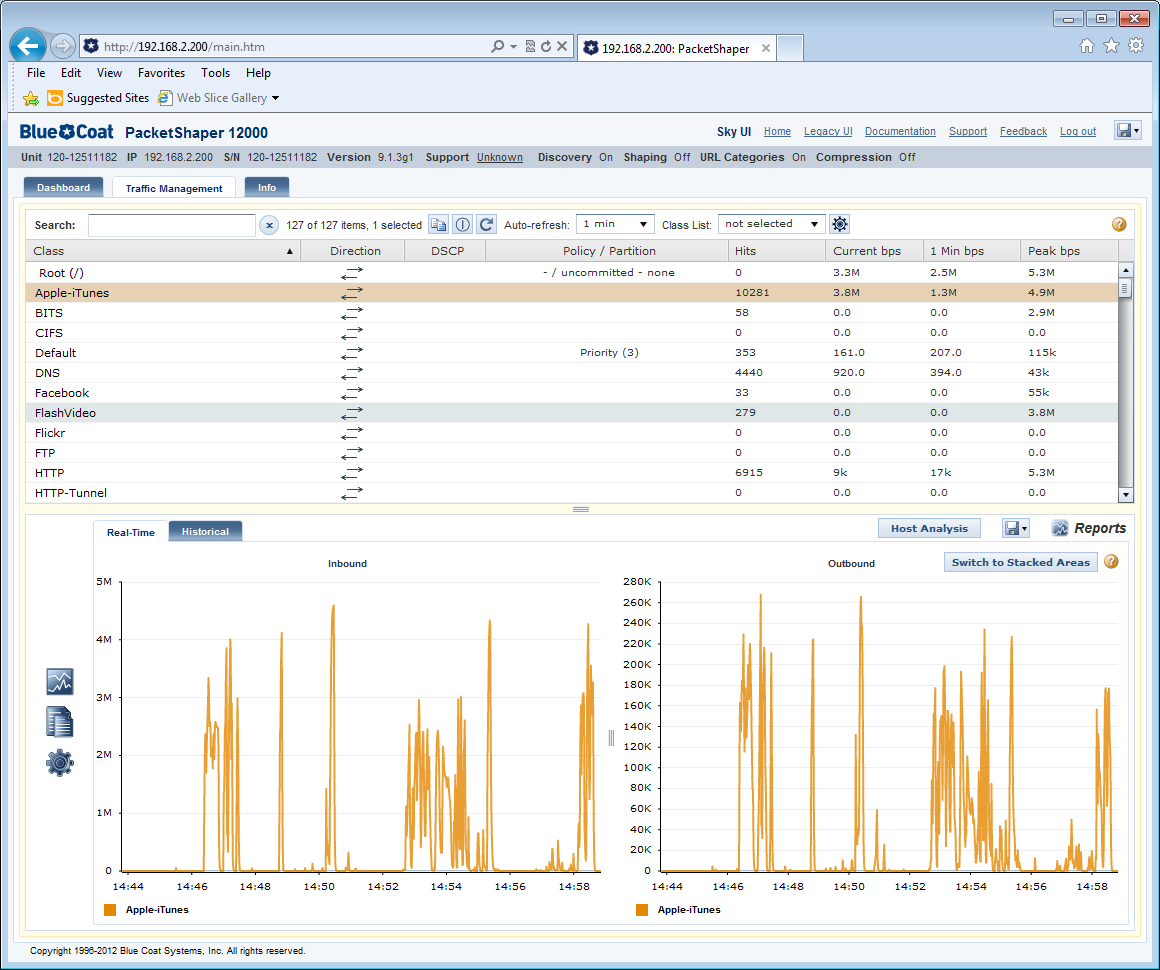
Packet 3
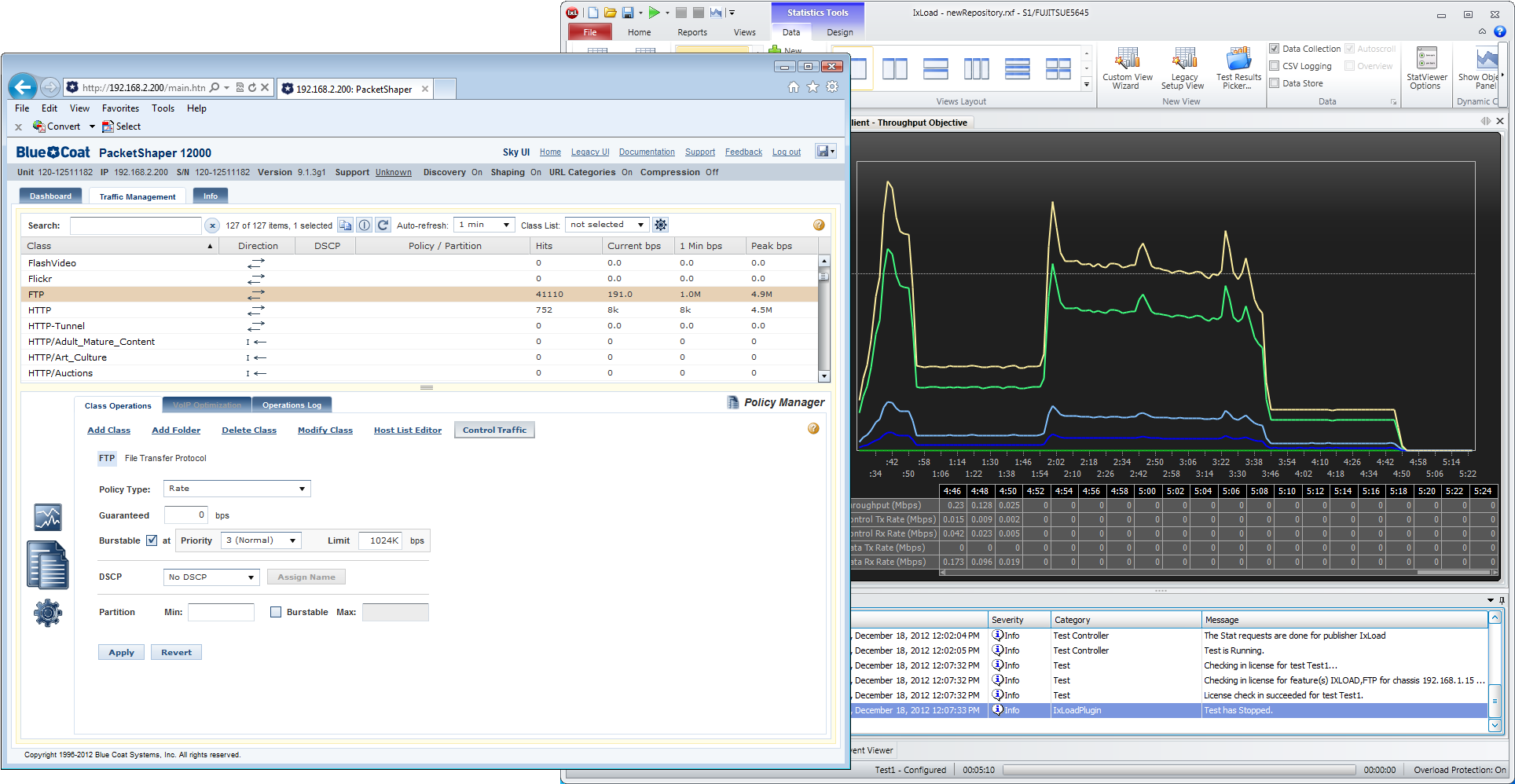
Packet 2
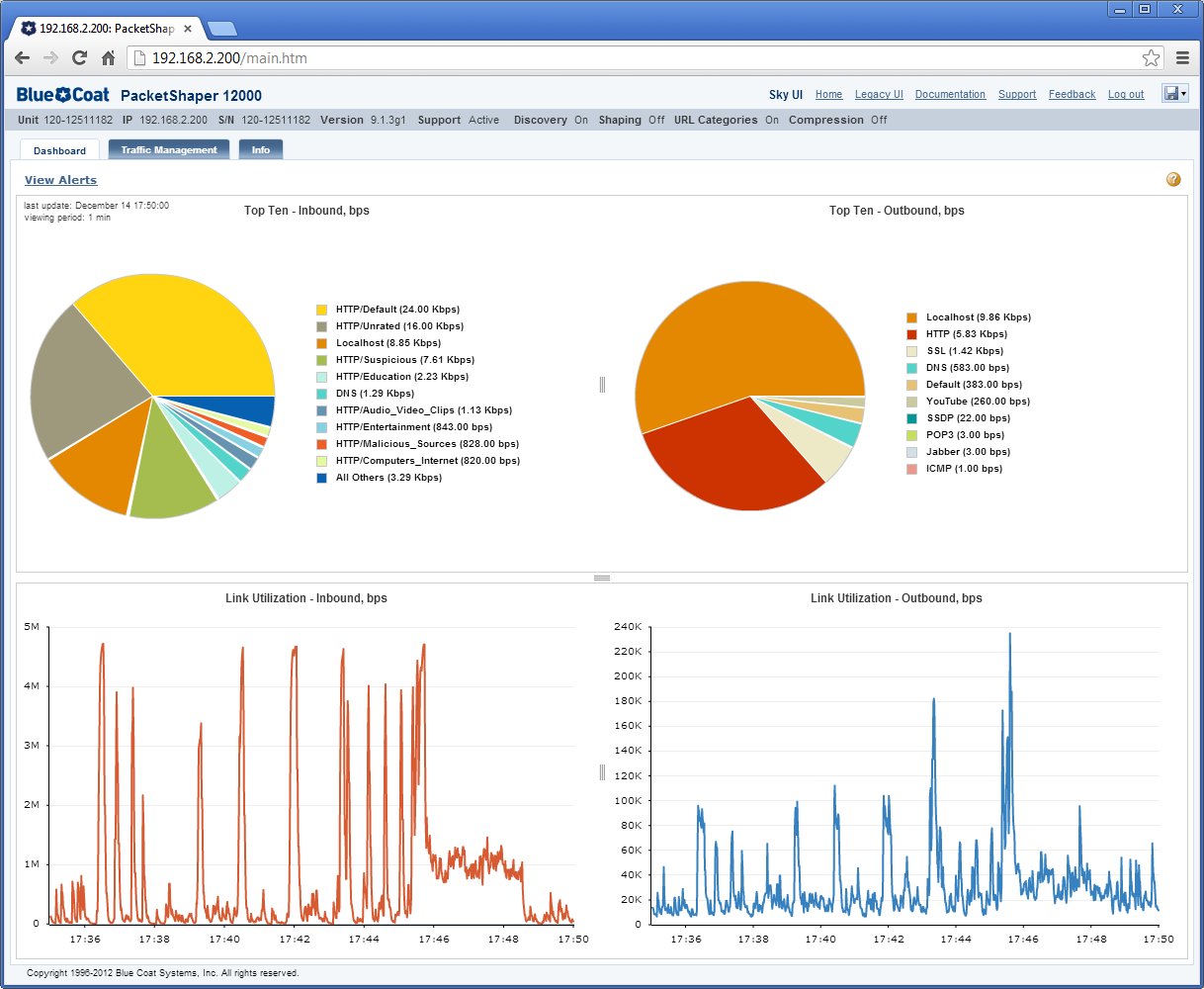
Packet 1
Blue Coat has built on the already enviable reputation of the PackerShaper appliances and enhanced them with a range of updates since aquiring it in 2008. A key feature is its integration with Blue Coat's WebPulse service allowing the PacketShapers to control traffic based on URL categories.
In this review we look at the flagship PacketShaper 12000 which is aimed at enterprises and ISPs. The starting price we've shown here gets you a license for monitoring and shaping a 500Mbits/sec traffic throughput and a PacketShaper 12000 with no limits will set you back around 46,000.
In standalone mode the main functions of the 12000 are traffic inspection, classification and bandwidth management. An optional extra is compression between two PacketShapers so application specific traffic can be reduced allowing more WAN resources to be freed up.

Blue Coat's new Sky user interface provides detailed real time views of top ten busiest WAN traffic classes
Deployment and the Sky UI
Deployment is simple as the appliance functions transparently so we just slipped it in between the lab's LAN and WAN connections. Initial contact is via the CLI over a serial connection where you run through the guided setup routine and provide details of your LAN and WAN link speeds.
Next, it's over to the web interface where you're greeted by Blue Coat's slick new Sky user interface. You can sit back and enjoy this for a while as the appliance defaults to discovery mode which you need to run for a few days so it can get a good feel for WAN utilisation.
The Sky Dashboard provides two big pie charts showing inbound and outbound traffic classifications in real-time so the segments are constantly changing. From the Traffic Management tab you can see how the classifications are going as Sky lists everything the PacketShaper has seen in a tidy tree structure.
You can see clearly how frequently an application or protocol is being used as the tree shows the traffic directions and their total hits along with current and peak traffic rates. For more detail the graphs can show historical data for periods ranging from an hour, day, week, month or a custom time slot.

Here we created a policy to rate limit FTP traffic through our WAN and tested it with the lab's Ixia XM2 system
PacketShaper Policies
Now you have a clearer idea of what's happening on your network you can start traffic shaping. The Policy Manager is accessed from the same Traffic Management window and three shaping methods are available. Policies apply shaping to individual flows within the class where you can block, discard, ignore, prioritise or rate control where the latter is used to assign flows with a guaranteed minimum rate.
Rate policies can be used to dish out spare bandwidth to higher priority flows and also limit them to a maximum rate. For DSCP (DiffServ Code Point) policies you assign a number in the flow control policy from 0 to 63 which is used by routers to assign a service grade.
Partitions are used to guarantee that mission critical applications get a fair cut of WAN resources. Whereas policies apply controls per flow, a partition creates a virtual pipe which applies a minimum bandwidth setting to all flows within the class.
Get the ITPro daily newsletter
Sign up today and you will receive a free copy of our Future Focus 2025 report - the leading guidance on AI, cybersecurity and other IT challenges as per 700+ senior executives
Dave is an IT consultant and freelance journalist specialising in hands-on reviews of computer networking products covering all market sectors from small businesses to enterprises. Founder of Binary Testing Ltd – the UK’s premier independent network testing laboratory - Dave has over 45 years of experience in the IT industry.
Dave has produced many thousands of in-depth business networking product reviews from his lab which have been reproduced globally. Writing for ITPro and its sister title, PC Pro, he covers all areas of business IT infrastructure, including servers, storage, network security, data protection, cloud, infrastructure and services.
-
 Nvidia braces for a $5.5 billion hit as tariffs reach the semiconductor industry
Nvidia braces for a $5.5 billion hit as tariffs reach the semiconductor industryNews The chipmaker says its H20 chips need a special license as its share price plummets
By Bobby Hellard Published
-
 Business leaders are having a crisis of confidence over data literacy
Business leaders are having a crisis of confidence over data literacyNews A Salesforce survey reveals business leaders don't trust their data, or their ability to make the most of it
By Emma Woollacott Published
-
 MITRE CVE program handed last minute reprieve amid funding lapse concerns
MITRE CVE program handed last minute reprieve amid funding lapse concernsNews The MITRE Corporation's Common Vulnerabilities and Exposures (CVEs) database has been handed a last minute reprieve amid concerns over funding.
By Rory Bathgate Last updated